 This week Angel Sanz, from the Department of Optics at Universidad Complutense de Madrid (UCM), visited TecOpto labs. We also received the visit of Adam Vallès and Javier Fermández, from ICFO and Universitat Autònoma de Barcelona, so we could have a miniworkshop on Structured Light.
This week Angel Sanz, from the Department of Optics at Universidad Complutense de Madrid (UCM), visited TecOpto labs. We also received the visit of Adam Vallès and Javier Fermández, from ICFO and Universitat Autònoma de Barcelona, so we could have a miniworkshop on Structured Light.
This is part of the activities of FASLIGHT – the Spanish Network of Fundamentals and Applications of Structured Light.
 Our recent paper in Optics Letters is entitled Shaped vector beams generated with a phase-only modulation—retarder optical configuration.
Our recent paper in Optics Letters is entitled Shaped vector beams generated with a phase-only modulation—retarder optical configuration.
In this work we present a new configuration to generate vector beams, with shaped intensity and polarization distributions. The system is based on using on two liquid-crystal spatial light modulators (SLM). The first device is used in a scalar mode to shape an input linearly polarized beam with a phase-only computer-generated hologram. Then, the Fourier transform is optically formed onto the second SLM, which operates as a pixelated retarder to spatially modify the state of polarization. The proposed optical architecture allows shaping the amplitude profile,
while easily generating the cylindrically polarized vector beam pattern.
The work has been done in collaboration with Prof. Jeffrey A. Davis and Prof. Don M. Cottrell, from San Diego State University.
Access through Research Gate.
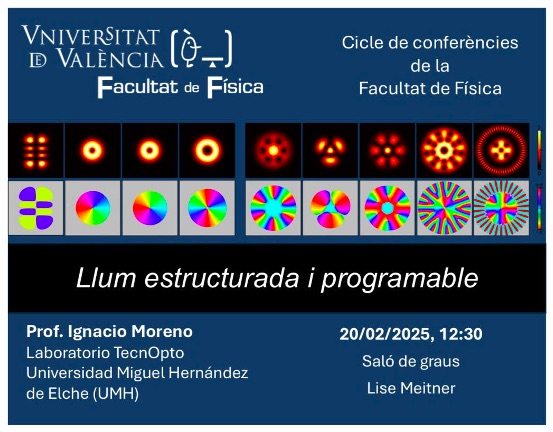 Ignacio Moreno delivered a talk about structured light and programmable optics at the Faculty of Physics of the University of Valencia.
Ignacio Moreno delivered a talk about structured light and programmable optics at the Faculty of Physics of the University of Valencia.
The presentation was part of the Faculty’s lecture series. Ignacio introduced the fundamentals of structured light, its control and generation with liquid crystal devices, and the generation of diffraction patterns with structured polarization elements, such as spatially varying polarizers or retarders.
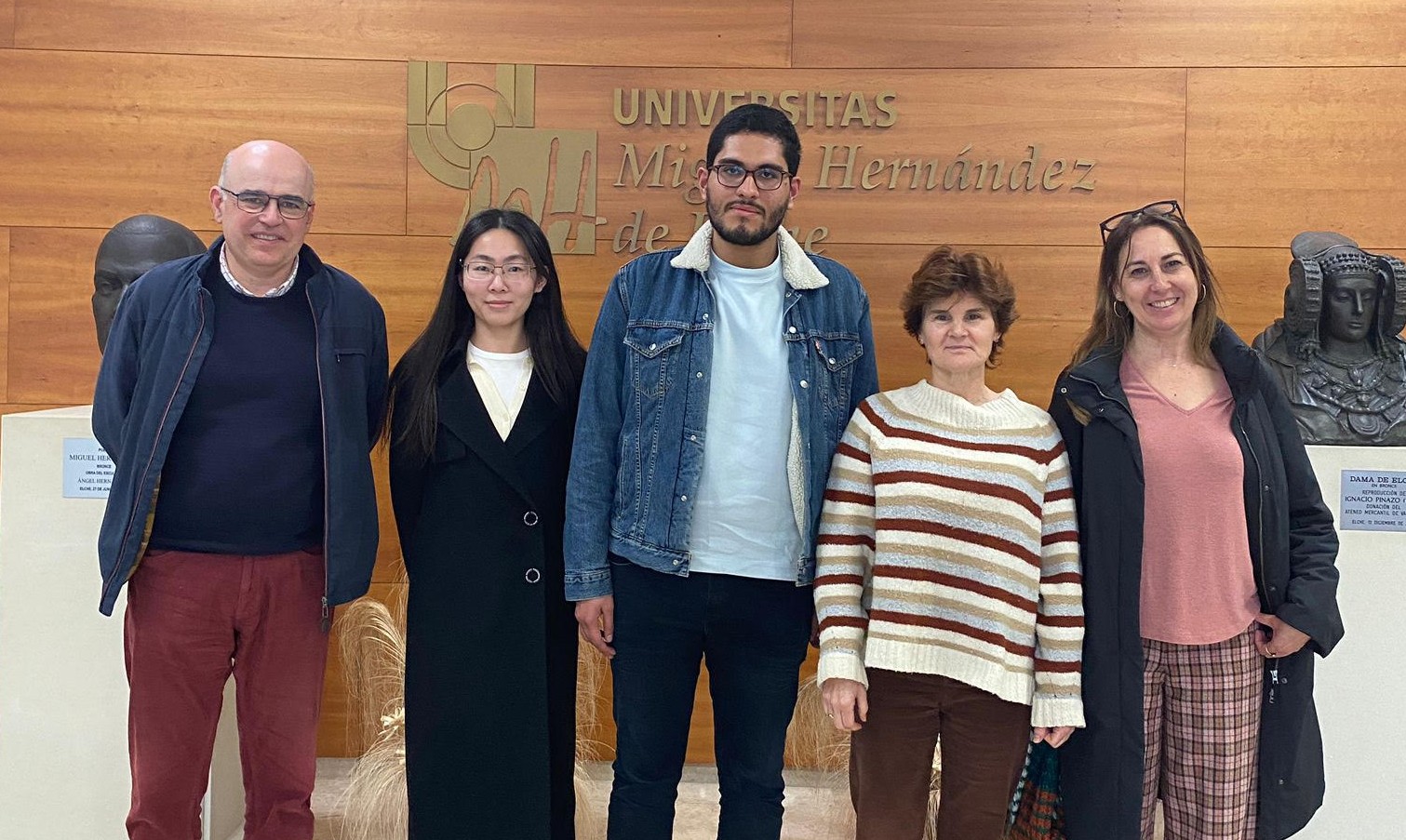 Santiago Ríos joined TecnOpto Lab. He is coming from Universidad Nacional de Colombia. He is recipient of a «Santiago Grisolia» grant, to do his PhD Thesis during the next four years.
Santiago Ríos joined TecnOpto Lab. He is coming from Universidad Nacional de Colombia. He is recipient of a «Santiago Grisolia» grant, to do his PhD Thesis during the next four years.
The picture shows the current TecnOpto team: from left to right, Ignacio Moreno, Shang Gao, Santiago Ríos, María del Mar Sánchez-López and Pascuala García.
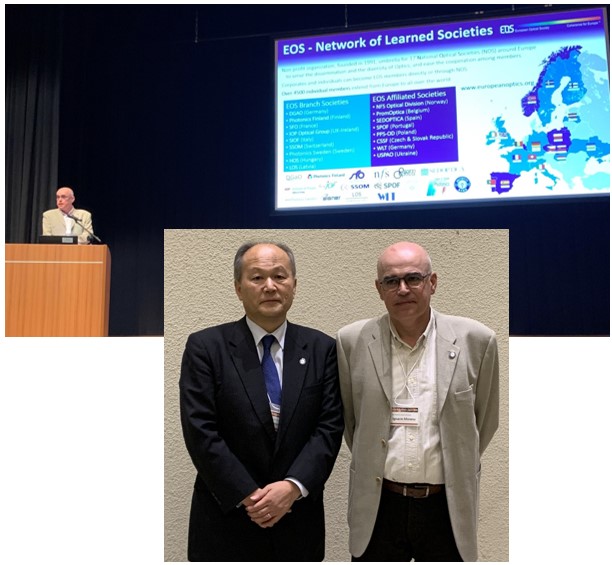 Ignacio Moreno participated at Optics & Photonics Japan 2024, the Annual Meeting of the Optical Society of Japan (OSJ), held in Chofu City, Tokyo, between November 29th and December 1st.2024.
Ignacio Moreno participated at Optics & Photonics Japan 2024, the Annual Meeting of the Optical Society of Japan (OSJ), held in Chofu City, Tokyo, between November 29th and December 1st.2024.
During the event, he delivered a talk on «Liquid-crystal optical modulators for diffractive and polarization control» in the Plennary Session, where he represented the European Optical Society (EOS).
In the picture Prof. Yoshimasa Kawata, President of OSJ, alongside Ignacio Moreno.
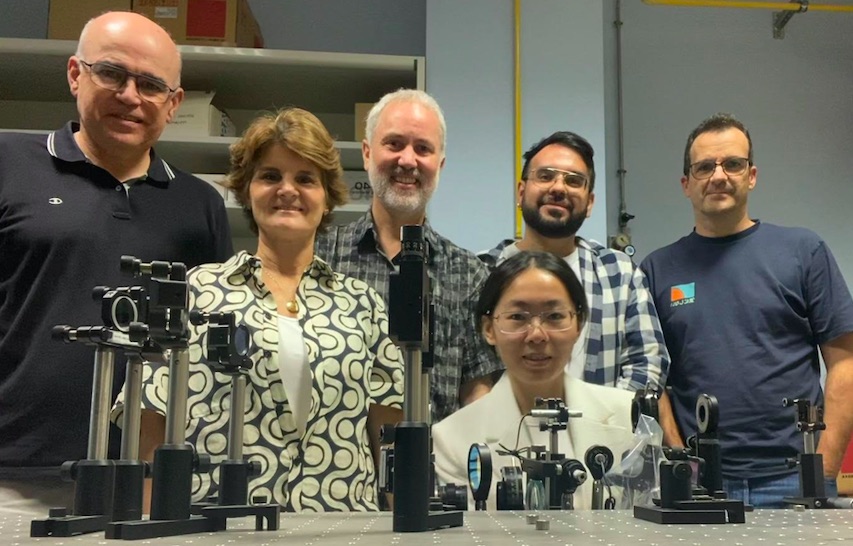 On Friday 11th October 2024 we had the visit of Dr. Alberto Álvarez Herrero, researcher at Instituto Nacional de Técnica Aeroespacial (INTA) and co-founder of the deep-tech start-up Eye4Sky, which develops liquid-crystal technologies for space applications.
On Friday 11th October 2024 we had the visit of Dr. Alberto Álvarez Herrero, researcher at Instituto Nacional de Técnica Aeroespacial (INTA) and co-founder of the deep-tech start-up Eye4Sky, which develops liquid-crystal technologies for space applications.
Alberto visited the TecnOpto labs and delivered a talk entitled «Eye4Sky: From research to the creation of a company of optical space technology», within the frame of the UMH Doctoral Program on Industrial and Telecommunications Technologies (TECNIT).
The talk (in Spanish) can be viewed at the following link.
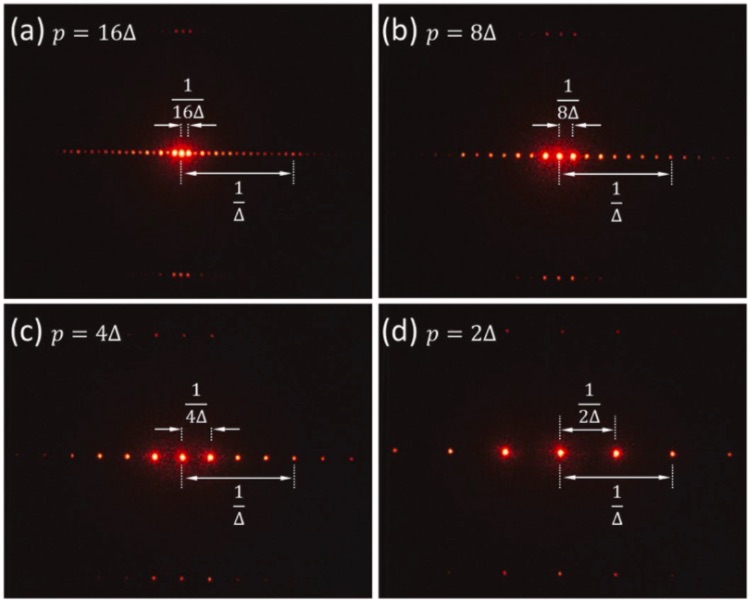 Our last paper is published in Optics & Lasers in Engineering entitled Analysis of diffraction gratings displayed in spatial light modulators at the Nyquist limit: Application to the triplicator grating.
Our last paper is published in Optics & Lasers in Engineering entitled Analysis of diffraction gratings displayed in spatial light modulators at the Nyquist limit: Application to the triplicator grating.
Here we analyze diffraction gratings displayed on a pixelated SLM at its spatial resolution limit (Nyquist limit) i.e., with largest diffraction angle, where the binary phase profile is the only alternative. We use the Fourier transform theory to analyze the binary phase grating in a pixelated device in terms of the pixel size, fill factor and phase difference between the two levels in the grating.
Experimental verification is provided by encoding binary phase triplicator gratings with different periods on a high-resolution liquid-crystal on silicon SLM. The effect of the device pixelation and pixel crosstalk on the diffraction efficiency and on the conditions to obtain a Nyquist triplicator phase grating are studied.
This paper is part of the PhD Thesis developed by Shang Gao.
miércoles, 9 de octubre de 2024
i.moreno
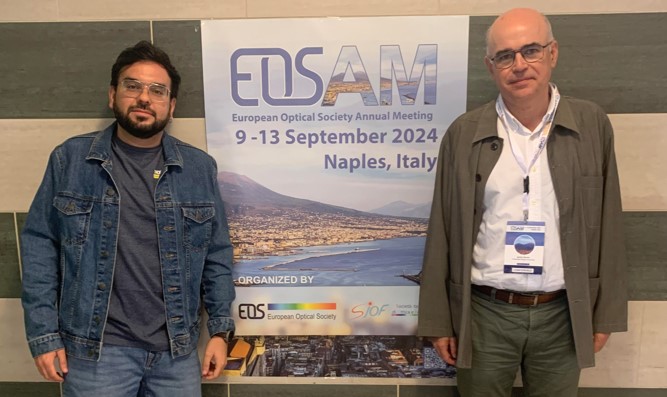 Ignacio Moreno and David Marco attended the Annual Meeting of the Euorpan Optical Socierty, EOSAM2024, held in Napoli (Italy) in 9-13 September 2024.
Ignacio Moreno and David Marco attended the Annual Meeting of the Euorpan Optical Socierty, EOSAM2024, held in Napoli (Italy) in 9-13 September 2024.
Ignacio Moreno delivered the tutorial on «Spatial Light Modulators» in collaboration with the company Holoeye Photonics. He was also co-chair of the Focused Session 1 on «Holography and Structured Light».
David Marco presented the talk entitled «Polarization diffractive elements analyzed with the Fourier transform Jones matrix and with the beam coherence polarization matrix«, where he summarized our recent work published in Results in Physics (link).
miércoles, 18 de septiembre de 2024
i.moreno
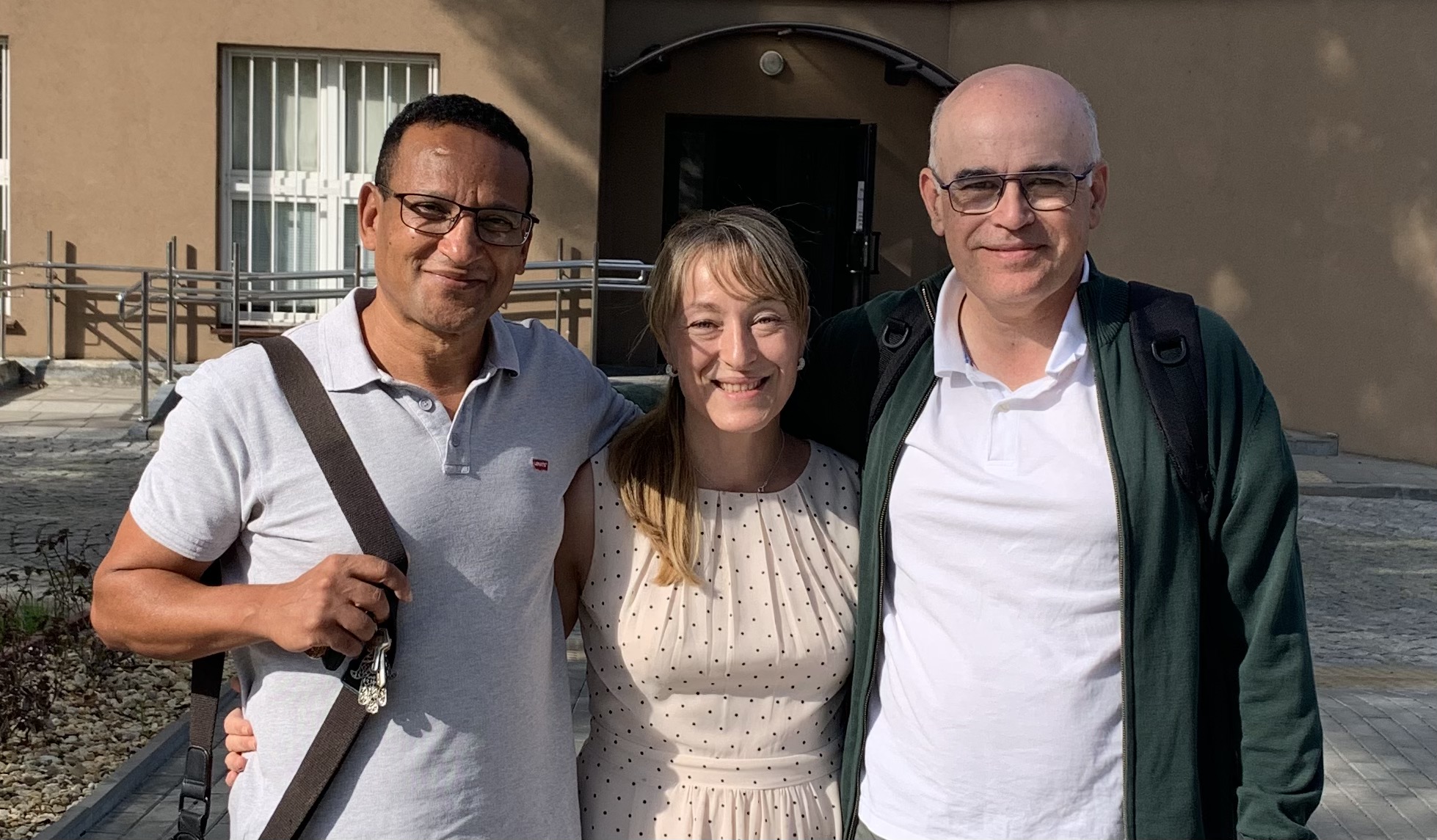 Ignacio Moreno visited WAT (Wojskowa Akademia Techniczna), the Military Universiy of Technology, in Warsaw, Poland. He stayed four weeks at the Laboratory of Crystal Physics and Technology (LCPT), included in the structure of the Institute of Applied Physics, Faculty of Advanced Technologies and Chemistry.
Ignacio Moreno visited WAT (Wojskowa Akademia Techniczna), the Military Universiy of Technology, in Warsaw, Poland. He stayed four weeks at the Laboratory of Crystal Physics and Technology (LCPT), included in the structure of the Institute of Applied Physics, Faculty of Advanced Technologies and Chemistry.
This stay allows continuing the fruitful collaboration with researchers from this center, in particular with Prof. Noureddine Bennis and Prof. Anna Spadło. In particular, the work was centered in the joint research on developing and characterizing liquid-crystal devices for the generation of structured light.
The stay of four weeks was financed by Generalitat Valenciana through the program CIBEST/2023.
sábado, 7 de septiembre de 2024
i.moreno
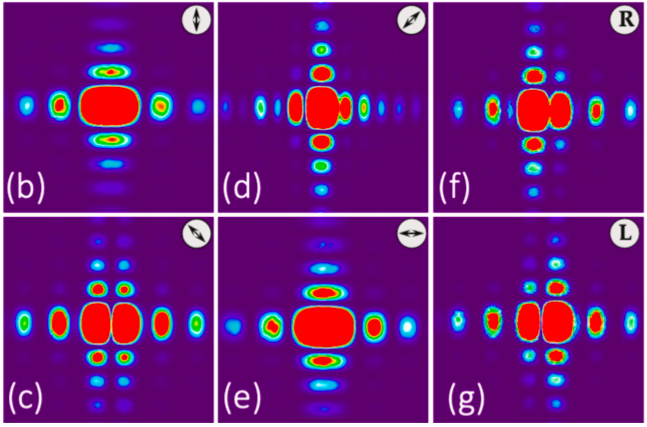 Our last paper is published in Results in Physics, entitled Combination of Fourier transform Jones matrix and beam coherence polarization matrix: Application to a double polarizer rectangular aperture.
Our last paper is published in Results in Physics, entitled Combination of Fourier transform Jones matrix and beam coherence polarization matrix: Application to a double polarizer rectangular aperture.
Here we integrate the Fourier transform Jones (FTJ) matrix approach with the beam coherence- polarization (BCP) matrix, suitable for describing partially coherent and partially polarized light.
We apply the method to a meaningful example: a rectangular aperture with orthogonal polarizers on each half, illuminated with uniform randomly polarized light. We provide experimental validation using a randomly polarized He-Ne laser and a specially fabricated double polarizer mask. Furthermore, by placing a polarizer behind the polarization diffractive optical element, we generate a scalar beam with spatial incoherence across two distinct zones, suggesting the potential use of randomly polarized lasers with binary patterned polarizers to encode arbitrary binary coherence functions.
The work has been done in collaboration with our colleagues Juan Campos and Angel Lizana, from Universitat Autònoma de Barcelona.
 This week Angel Sanz, from the Department of Optics at Universidad Complutense de Madrid (UCM), visited TecOpto labs. We also received the visit of Adam Vallès and Javier Fermández, from ICFO and Universitat Autònoma de Barcelona, so we could have a miniworkshop on Structured Light.
This week Angel Sanz, from the Department of Optics at Universidad Complutense de Madrid (UCM), visited TecOpto labs. We also received the visit of Adam Vallès and Javier Fermández, from ICFO and Universitat Autònoma de Barcelona, so we could have a miniworkshop on Structured Light.







